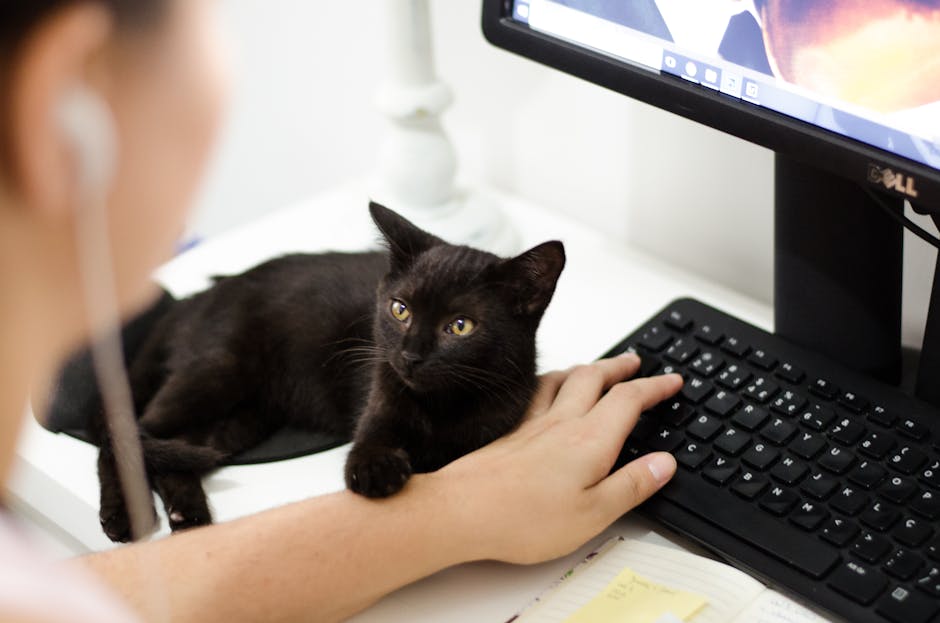Unleash the Power of Pet Personality: Transform Training Today!
Understanding your pet's unique personality can be a game-changer in their care and training. It’s a well-worn truth among pet owners: every dog does not respond the same way to training techniques. Just as each human has distinctive traits that influence their behavior, our furry friends possess their own unique personalities and quirks. By tapping into these idiosyncrasies, you can revolutionize the way you train, communicate, and bond with your pets. This isn’t just about making training sessions more enjoyable—it's about creating a meaningful connection that fosters deeper understanding and partnership.
In this article, we will delve into the fascinating concept of pet personality typing and its impact on training strategies. We aim to equip you with the knowledge you need to better relate to your pet, refine your training methods, and ultimately improve their well-being. You’ll discover how to identify your pet's personality, which traits influence behavior, and how that knowledge will transform your training approach for lifelong success.
Understanding Pet Personalities: A Foundation for Training

Pet personality typing draws upon a blend of behavioral science and observational practices. Understanding your pet's temperament—be it bold and adventurous, shy and reserved, or somewhere in between—enables you to customize your training methods. Just as we adjust our communication styles when interacting with different people, acknowledging that not all pets respond to training in the same way allows us to tailor our approaches.
The Five Types of Pet Personalities

Research has categorized pet personalities into several broad types. Here’s a look at some prevalent categories you might consider when assessing your pet:
-
The Adventurer: Always curious and eager to explore, these pets thrive on physical and mental challenges. Training for adventurers should be dynamic and engaging, utilizing puzzle toys and outdoor activities.
-
The Couch Potato: Content to lounge around, these pets may require more motivation to engage in training. Short, fun sessions coupled with enticing treats can help spark their interest.
-
The Social Butterfly: Upbeat and friendly, these pets excel in group settings. Incorporating socialization into training can enhance their skills and make learning enjoyable.
-
The Timid Soul: Shy pets might need reassurance and patience during training. A nurturing approach with gentle reinforcement can help build their confidence.
-
The Watchful Guardian: In tune with their surroundings, these pets can be protective. Training should focus on positive reinforcement that channels their guarding impulses into productive behaviors.
To successfully decode your pet's temperament, pay close attention to their body language and preferences. Are they more responsive in lively environments, or do they shy away from commotion? This ongoing observational process will set the foundation for customized, effective training strategies.
Link to External Resources

To dive deeper into the significance of understanding pet personalities, consider visiting Harvard Business Review, which often covers the importance of understanding unique behaviors in team dynamics—parallels that can be drawn with training our pets.
Tailoring Training to Personality Types

Now that you’ve grasped the essential types of pet personalities, it’s crucial to implement training techniques that fit these traits. Here’s a closer look at how you can adapt your strategies to suit your pet’s character.
Engaging Adventurers

For pets with an adventurous spirit, challenge them with agility courses, interactive toys, or scent training. Keeping the training sessions varied and stimulating will engage their inquisitive nature.
One effective approach is to incorporate scent trails. Training your dog to follow a scent trail not only plays to their instinctual behavior but also reinforces obedience through fun. For some innovative tips on this method, check out our article on unlocking your pet's potential through scent training.
Motivating Couch Potatoes

If your pet embodies the characteristics of a couch potato, start with short training sessions that gradually increase in intensity. Using high-value treats and integrating playtime can help keep their attention.
Incorporate family participation during training to elevate interest and excitement while providing social reinforcement. Training doesn’t always have to feel like a chore—it can be a shared experience.
Socializing the Social Butterflies

For the social butterflies, using group classes or playdates can enhance their training. These pets thrive in engaging environments, so integrating social cues and collaborative play can make learning more effective.
Consider organizing scheduled playdates that reinforce commands while allowing them to socialize. This dual benefit satisfies their sociable needs and promotes effective learning.
Encouraging Timid Souls

Training timid pets requires patience and a gentle hand. Start slow, using positive reinforcement and low-stakes commands to help ease their anxiety.
Creating a safe, calm space for these pets can significantly improve their comfort levels. Focus on small victories and celebrate these achievements to build their confidence.
Inspiring the Watchful Guardians

While watchful guardians can be protective, training can channel these traits positively. Engaging them in tasks that reward compliance, such as fetching items or alerting appropriately, reinforces good behavior.
Consider teaching relay games that require focus and help direct their instincts towards more constructive behaviors. For a comprehensive guide to understanding your pet's communication and behavior, visit our article on decoding your pet’s body language.
The Importance of Positive Reinforcement
Regardless of personality, positive reinforcement remains a cornerstone of any successful training approach. Techniques that reward good behavior create positive associations in your pet's mind and can significantly enhance the learning experience.
Tips for Effective Positive Reinforcement
-
Immediate Reward: Provide the reward immediately after the desired behavior to build a strong connection.
-
Variety of Rewards: Mix treats, verbal praise, and playtime to keep your pet guessing and engaged.
-
Consistent Cues: Use consistent verbal cues and gestures to improve understanding and response rates.
When your pet learns that certain behaviors yield rewards, their motivation to repeat those behaviors greatly increases.
Deepening Your Bond with Your Pet
Training shouldn’t be viewed as just a means to an end—but rather as a fun and engaging way to deepen your bond with your pet. By utilizing personality typing, you’re not just enhancing their learning, but you’re also creating an opportunity to connect on a deeper level.
Revamping Your Approach with Mindfulness
Integrating mindfulness practices into training can further enhance your connection. Techniques that emphasize patience and presence create shared experiences that can translate into a powerful training partnership. Try including moments of calm during training sessions to help your pet focus better.
Examine the benefits of mindfulness in the context of pet training through our resource on strengthening your bond through mindful moments.
Real-Life Applications: Testimonials from Pet Owners
Many pet owners have found that understanding their pet’s personality profoundly impacted their training. Jane, a dog owner, shared how recognizing her Beagle's adventurous spirit shifted her training style:
“Once I realized that my Beagle loved searching for things, I started adding scent games into our training. Now, she looks forward to our sessions, and her obedience has improved dramatically. We’re more connected than ever!"
Similarly, Mike, a cat enthusiast, found success through a tailored approach with his timid tabby:
“My cat never engaged in play until I slowed down and recognized her fear. After using gentle techniques and positive reinforcement, she’s playful and responsive in just a few weeks.”
These stories echo the possibilities that come with customizing training techniques to fit your pet’s personality, showcasing how investing time in understanding pets can pay off immensely.
Next Steps for Success
-
Assess Your Pet's Personality: Spend a few days observing your pet to identify their behavioral traits.
-
Choose Appropriate Training Techniques: Once you’ve identified the personality type, tailor your training approach to suit their needs.
-
Engage with Professional Resources: Don’t hesitate to turn to expert guidance. Resources such as the American Kennel Club and reputable pet trainers hold a wealth of information compatible with your goals.
-
Monitor Progress: Keep track of your pet’s success and adjust your techniques as necessary. Each pet is unique, and understanding their path to growth is critical.
-
Celebrate Achievements: Reinforce milestones in your pet's training journey with celebrations, whether that’s a play session, treats, or special outings.
The journey to train your pet based on their personality is as rewarding as it is essential. Understanding the nuances of your pet's unique traits opens the door to a new world of bonding and effective training techniques that can enhance both your lives.
Final Thoughts
As you embark on your journey of pet personality typing, remember that successful training is less about the techniques and more about the connection you cultivate. Understanding your pet's individual traits allows you to approach training effectively and harmoniously, fostering both obedience and trust.
With patience, creativity, and a customized training approach, you will not only enrich your pet’s life but also enhance your relationship in profound ways. Let the exploration of your pet's personality guide you as you uncover the heartfelt joys of a well-trained companion!



